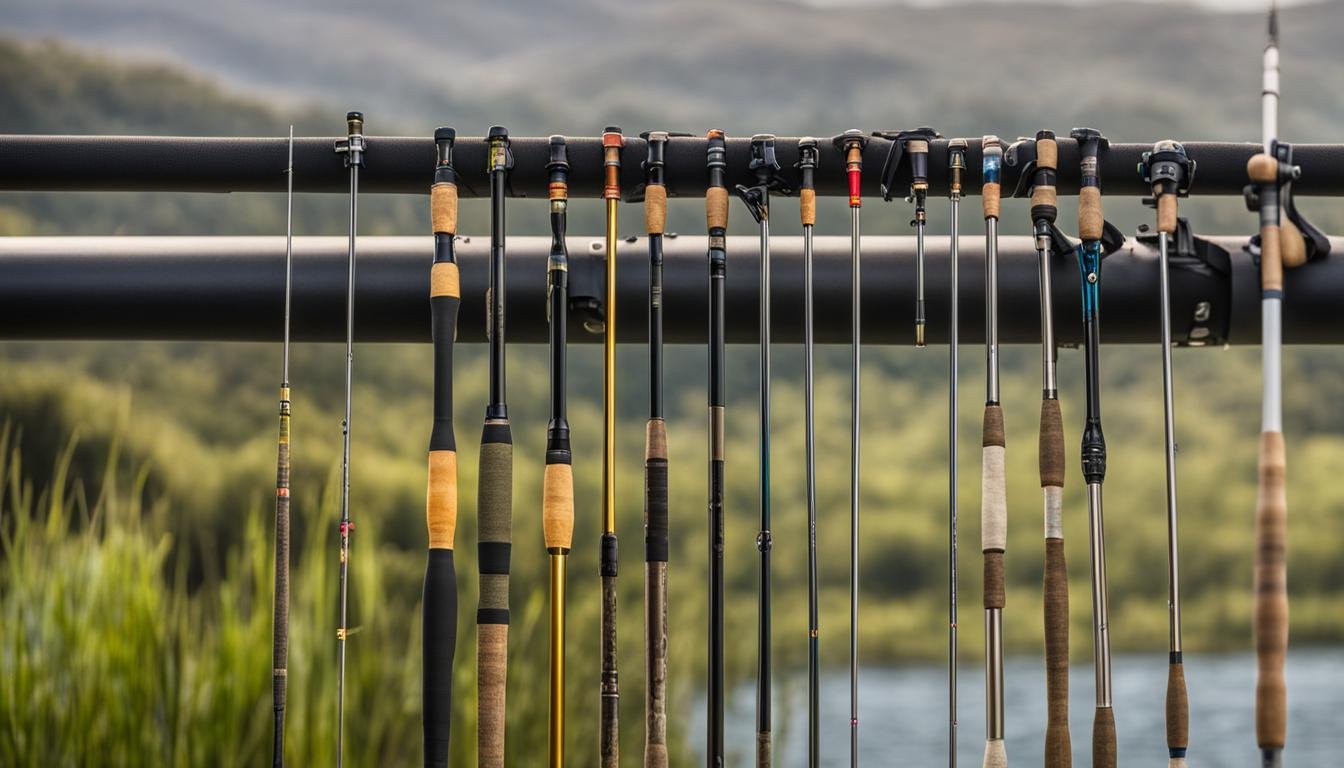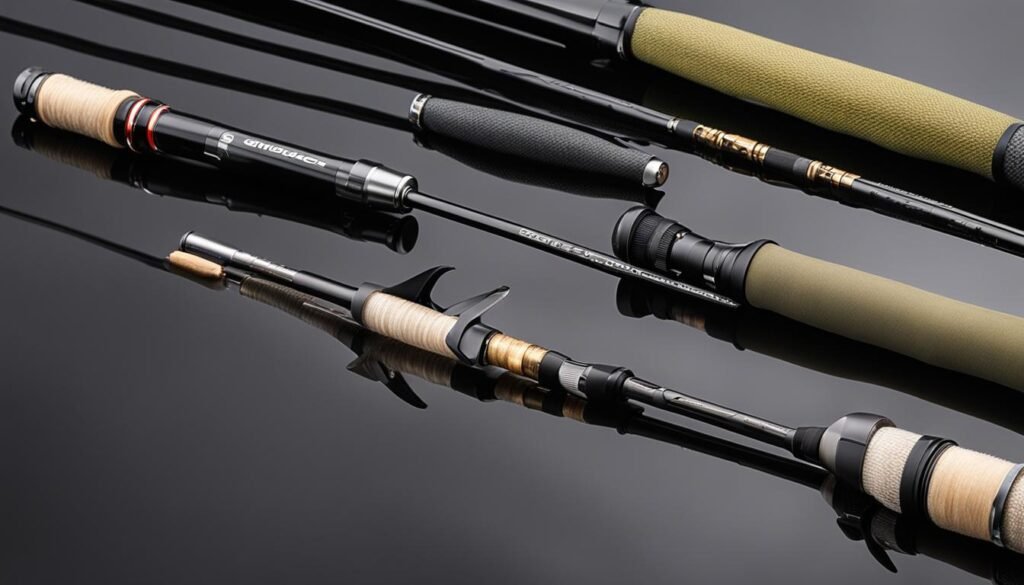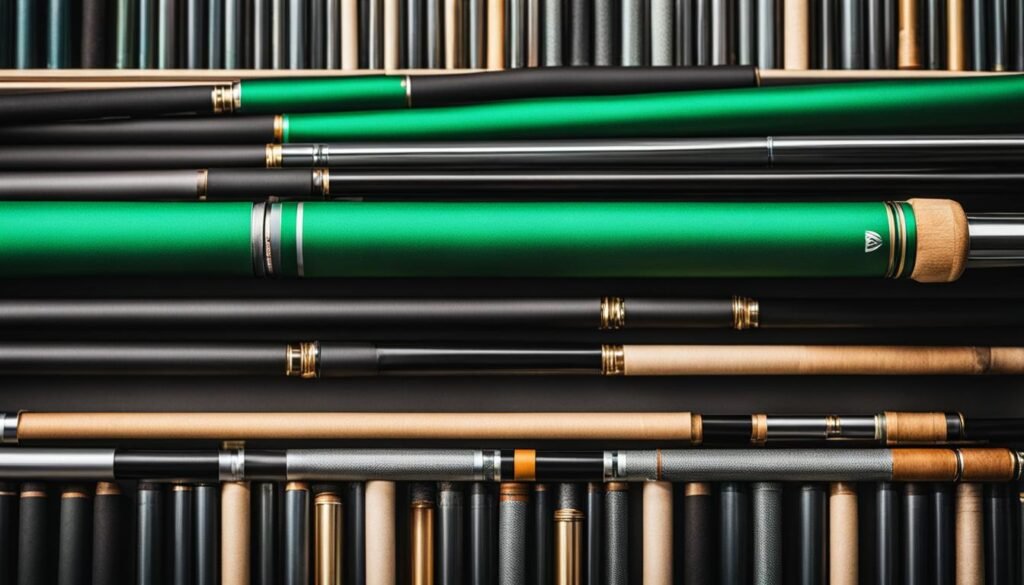When it comes to bass fishing, the most important piece of equipment is your fishing rod. It dictates how you set the hook, cast accurately, and detect bites. While there isn’t a single “best rod” for bass fishing, there are several factors to consider when choosing the right rod for your needs. These include the fishing technique, lure size, body size, and whether you prefer spinning or casting reels. By narrowing down your rod selection based on these factors, you can find the best rod that compliments your preferred techniques.

Factors to Consider When Purchasing a Bass Rod
When it comes to purchasing a bass fishing rod, there are several important factors to consider. By taking these factors into account, you can ensure that you choose a rod that suits your specific needs and preferences.
Fishing Technique
The fishing technique you plan to use is a crucial factor in determining the type of bass rod you should purchase. Different techniques require different rod characteristics to optimize performance. Whether you prefer flipping and pitching, finesse fishing, or power fishing, selecting a rod designed for your preferred technique will enhance your success on the water.
Lure Size
The size of the lures you will be using is another key consideration when purchasing a bass rod. Different rods are designed to handle specific lure sizes, so it’s important to choose a rod that matches the lures you plan to use. This ensures that the rod’s action and power are properly matched to provide optimal lure presentation and control.
Body Size and Comfort
Your body size and comfort should also be taken into account when selecting a bass rod. The length and weight of the rod should align with your physical attributes to ensure comfortable and efficient use. For example, shorter individuals may prefer a slightly shorter rod, while taller anglers may benefit from a longer rod for better casting and control.
Spinning or Casting Reel
Determining whether you prefer a spinning or casting reel is another important factor to consider when purchasing a bass rod. Spinning reels are generally easier to use for beginners and are suitable for a wide range of fishing techniques. On the other hand, casting reels offer more control and are better suited for heavy lures and specific casting techniques. Choosing a rod that is compatible with your preferred reel type is essential for optimal performance and ease of use.
Considering these factors when purchasing a bass rod will help you narrow down your options and find the perfect rod for your fishing style, technique, and comfort. By choosing a rod that aligns with your specific needs, you’ll be well-equipped to tackle any bass fishing adventure.
Fishing Techniques and Rod Selection
Different fishing techniques require different types of rods. When selecting a rod, it’s essential to consider the fishing techniques you plan to use. This ensures that you have the right tool for the job and increases your chances of a successful fishing trip.
If you’re planning to fish in areas with lots of vegetation and debris, such as lily pads or thick grass, you’ll need a rod that excels at tossing topwater baits and jigs. These techniques allow you to navigate through the obstacles and target bass in these hard-to-reach areas.
On the other hand, if you’re fishing in open water with fewer snags and obstacles, a rod that is conducive to throwing spinners, crankbaits, and other lures that can draw aggressive bites may be a better choice. These techniques are highly effective at covering a large area and enticing fish to strike.
By understanding the fishing holes you frequent and the techniques that work best in those areas, you can make an informed decision when selecting a rod. This ensures that you have a rod that is well-suited for the specific techniques you enjoy and the fishing conditions you encounter.
- Match your rod to the techniques you plan to use
- Consider the types of fishing areas you frequent
- Choose a rod that excels at the specific techniques you enjoy
- Factor in the fishing conditions you typically encounter
Lure Size and Rod Selection
Lure size plays a crucial role in determining the right bass fishing rod for optimal performance. When selecting a rod, pay close attention to the markings, as they indicate the recommended line and lure weight to use with the rod. By choosing a rod that can handle the size of lures you plan to use, you ensure better casting accuracy and overall fishing experience.
For example, if you prefer mid-sized jigs, look for a rod that is rated for 1/4 to 1-ounce lures. This rating indicates that the rod is designed to handle the weight and action of these lures, enabling you to make precise and controlled casts.
Selecting a rod with a weight range for lures offers versatility in lure selection, allowing you to use a variety of sizes based on the conditions and fish behavior. This flexibility ensures that you have the right tool in your hands to entice bass in different situations.
Body Size and Rod Length
Your body size plays a crucial role in your comfort and maneuverability when using a bass fishing rod. It’s important to choose a rod length that allows you to cast accurately and comfortably without compromising on performance.
For shorter individuals, a rod length of 6’6″ to 7′ is typically ideal. This length provides easy handling and better control, allowing you to make precise casts and detect subtle bites. On the other hand, taller individuals can benefit from a longer rod length of 7’6″ or 8′. The additional length provides increased casting distance and leverage, which can be advantageous in specific fishing situations.
Remember, the correct rod length for your body size is crucial in maximizing your fishing experience. By choosing the right length, you’ll have better casting accuracy, improved maneuverability, and overall enhanced performance throughout your fishing adventures.
Spinning vs. Casting Reels
When it comes to selecting a bass fishing rod, one important consideration is choosing between spinning and casting reels. Each type offers its own advantages and is suited for different fishing techniques and preferences.
Spinning reels are generally easier for beginners to use. They have a fixed spool underneath the rod and allow for a more straightforward casting motion. Spinning reels are versatile and can handle a variety of lures, making them a popular choice among bass anglers of all skill levels.
Casting reels, on the other hand, provide more control and accuracy. They have a spool on top of the rod and require a specific casting technique called “thumbing” to control the line’s release during the cast. Casting reels are known for their ability to handle larger and various types of lines, making them ideal for targeting bigger bass or using heavier tackle.
When choosing between spinning and casting reels, it’s essential to consider your skill level, preferred fishing techniques, and the size of bass you plan to target. If you’re a beginner or enjoy using lighter tackle and finesse techniques, a spinning reel may be a better choice. On the other hand, if you’re an experienced angler looking for more control and the ability to cast heavier lures or use larger lines, a casting reel may suit your needs better.
Recommended Bass Rod Configurations

While there isn’t a single rod that can do everything flawlessly, there are three recommended rod configurations that cover the most common bass fishing techniques.
- A medium power, fast action rod is ideal for weightless soft-plastics and Texas rigs. This configuration offers sensitivity and precision for finesse techniques.
- A medium-heavy power, fast action rod is perfect for jigs, topwater baits, and smaller swimbaits. It provides the strength and backbone needed to handle larger fish and heavier lures.
- A moderate power, moderate action rod is well-suited for crankbaits and jerkbaits. Its moderate flex allows for effective lure control and better hook sets.
Best Fishing Rod Materials
The materials used in the construction of a fishing rod play a crucial role in determining its overall performance and durability. When it comes to choosing the best fishing rod for your needs, understanding the different materials available is essential. Here are some of the top fishing rod materials to consider:
- Higher Modulus Graphite: Fishing rods made from higher modulus graphite offer excellent sensitivity and responsiveness. This material is lightweight, allowing for long casting distance and improved accuracy. The higher modulus also provides increased tensile strength, making the rod less prone to breaking under heavy loads.
- Carbon Fiber Weaves: Adding additional carbon fiber weaves to the graphite construction enhances the overall strength and stiffness of the fishing rod. This results in improved casting performance and better hook sets, allowing you to feel even the slightest nibble from the fish.
- Fiberglass: Fiberglass is known for its incredible toughness and flexibility, making it an excellent choice for fishing rods that require extra durability. Fiberglass rods can withstand more abuse and are less likely to break when fighting larger, hard-fighting fish.
- Composite Materials: Many fishing rods today are made from composite materials, which combine the best qualities of both graphite and fiberglass. These rods offer a perfect balance of strength, sensitivity, and flexibility, making them versatile options for various fishing situations.
Importance of Price and Brand

When it comes to purchasing a bass fishing rod, price and brand are two important factors that should not be overlooked. While the price tag doesn’t always indicate value, investing in a higher quality rod can result in long-term use and enjoyment on the water. A well-made rod from a trusted brand is likely to offer durability, sensitivity, and performance.
Trusted brands have earned their reputation for a reason. They have a track record of producing reliable and high-quality fishing rods that have been tested and proven by anglers. These brands have invested years of research and development to ensure their rods meet the demands of various fishing techniques and conditions.
However, it’s also worth considering newer brands in the market. Some of these brands may surprise you with their innovative designs, high-quality materials, and affordable prices. By exploring these newer options, you may find hidden gems that offer exceptional value without breaking the bank.
When it comes to finding the right balance between price and quality, consider your budget and the features that are most important to you. Look for rods that offer the right combination of durability, sensitivity, and performance within your price range. By doing so, you can ensure that you’re getting the best value for your money.
Types of Fishing Rods
When it comes to fishing rods, there are a variety of types to choose from based on your fishing preferences and techniques. Understanding the different types of fishing rods will help you select the right one for your needs.
The two main types of conventional fishing rods are spinning rods and casting rods. Spinning rods are designed to be used with spinning reels, with the reel positioned underneath the rod. These rods are versatile and easy to use, making them suitable for beginners and a variety of fishing techniques.
On the other hand, casting rods are used with baitcasting or spin cast reels and feature a trigger in the handle for better control. Casting rods are known for their accuracy and power, making them the preferred choice for more experienced anglers and specific fishing techniques that require precise casting.
Aside from spinning and casting rods, there are also specialty rods tailored for specific fishing styles. Fly fishing rods, for example, are designed for fly casting and require different techniques compared to spinning or casting rods. Jigging rods, on the other hand, are specifically designed for vertical jigging techniques and have a unique action to handle the motion required for this style of fishing.
If you’re a frequent traveler or have limited storage space, multi-piece rods, such as travel rods, are a convenient option. These rods can be easily disassembled into multiple sections, allowing for easier transport without compromising performance.
It’s important to consider your fishing style, target species, and preferred techniques when choosing a fishing rod. Each type of rod has its own advantages and is suited for different fishing conditions, so take the time to research and choose the one that best fits your needs.
Understanding Action and Power in a Fishing Rod
When it comes to selecting the perfect fishing rod, understanding the action and power of the rod is crucial. The action refers to where the rod flexes along the blank, and it plays a key role in how the rod behaves during a cast and when fighting a fish. Fast action rods, for example, flex mostly near the tip, providing increased sensitivity and quicker hook sets. On the other hand, slow action rods bend the most near the butt section, allowing for a more forgiving experience that can help prevent line breaks.
The power of a fishing rod, also known as its “weight rating,” determines how much pressure it takes to flex the rod. Rods are categorized into different power ratings, such as ultralight, light, medium-light, medium, medium-heavy, and heavy. Choosing the right power depends on the type of fishing you’ll be doing and the line and lure weight you’ll be using. If you’re planning to catch smaller fish or use lighter lures, an ultralight or light power rod would be suitable. However, if you’re targeting larger species or using heavier lures, you’ll need a medium-heavy or heavy power rod to handle the extra weight and strength.
Looking For More Bass Fishing Advice?
Check out our other articles to learn more and find out more about bass fishing
